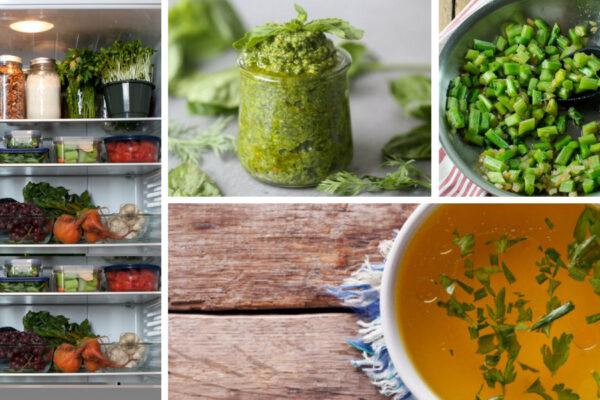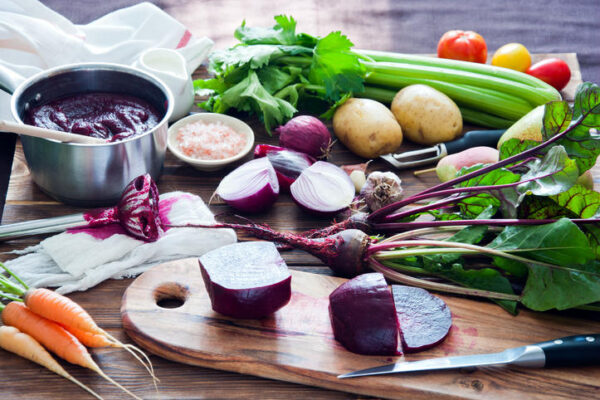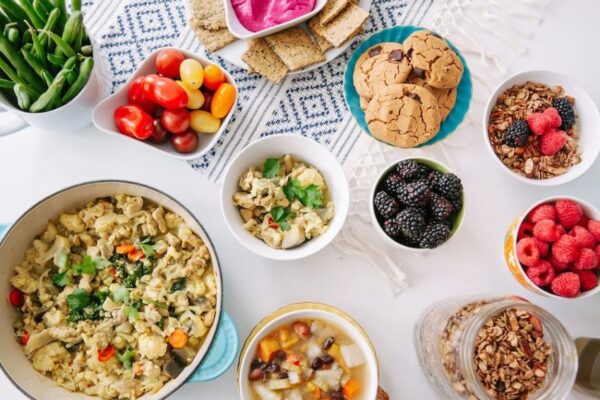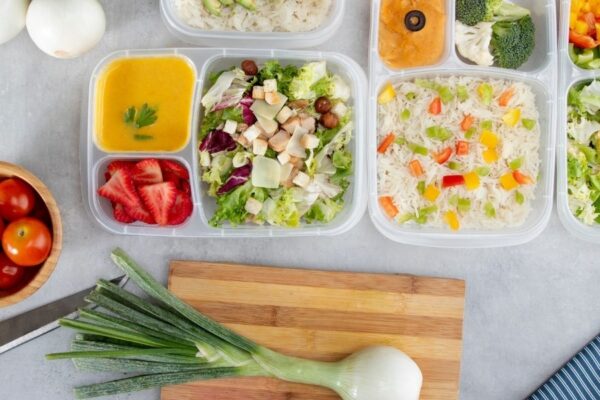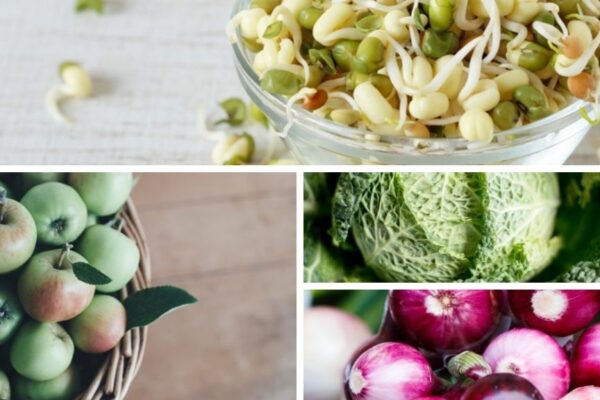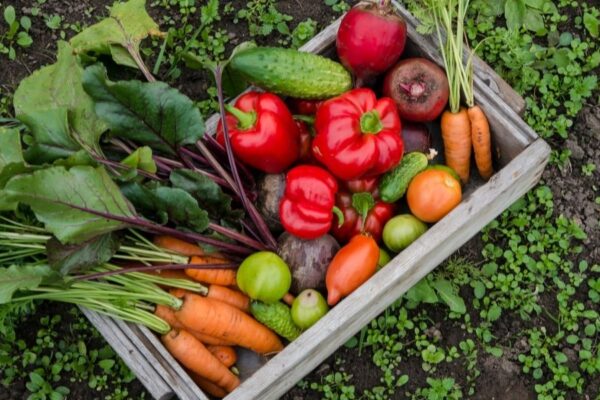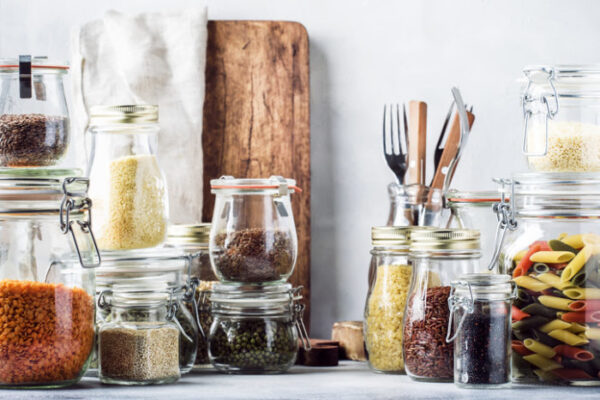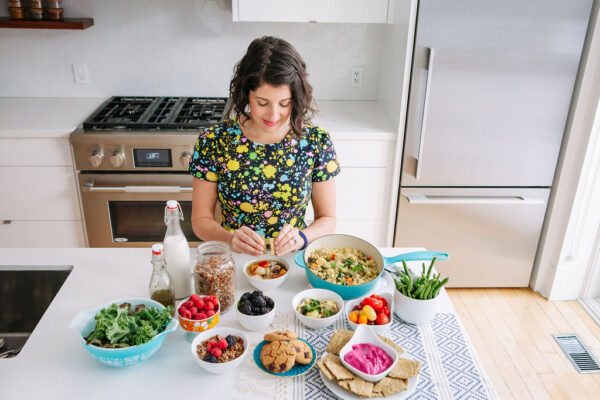How to Cook a Whole Chicken – And Use All of It
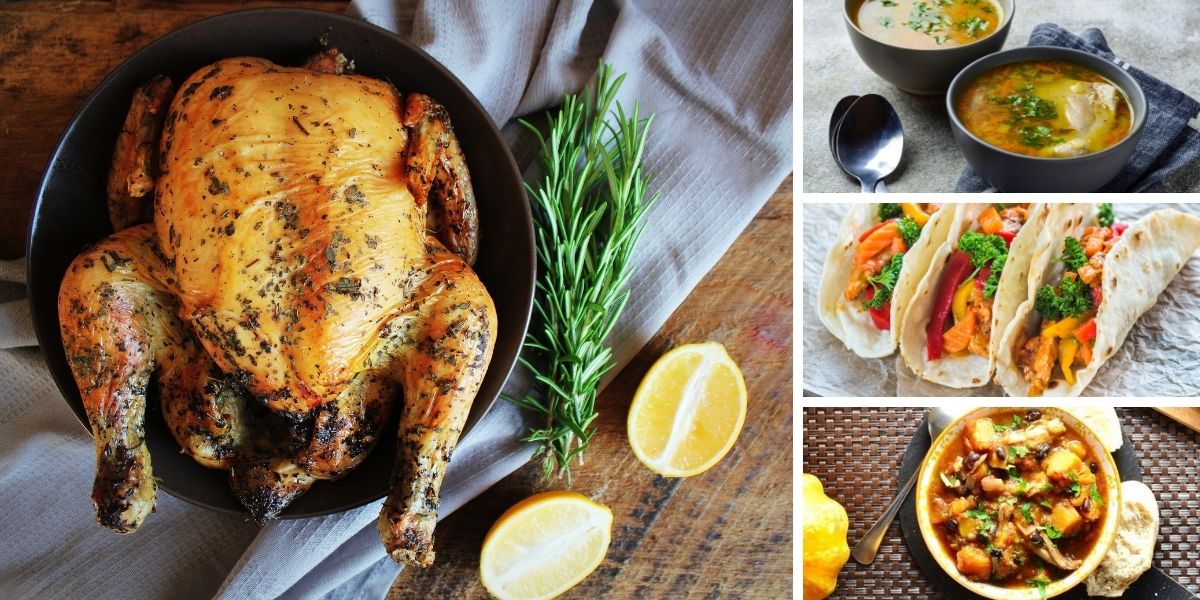
Whether you’re a new or experienced home chef, the process of learning how to cook a whole chicken may seem like a daunting task fraught with potential blunders (or a dry, overcooked bird). If you often reach for chicken breasts or thighs at the grocery store because an entire chicken is too intimidating, we’d like to tempt you into trying a new skill: cooking a whole chicken. It’s easier than you might expect, economical, and there are so many ways you can use the leftovers!
In this guide, along with a step-by-step video, you’ll learn how to cook a whole chicken and what you can do with it all to reduce food waste.
Why Roast or Cook a Whole Chicken?
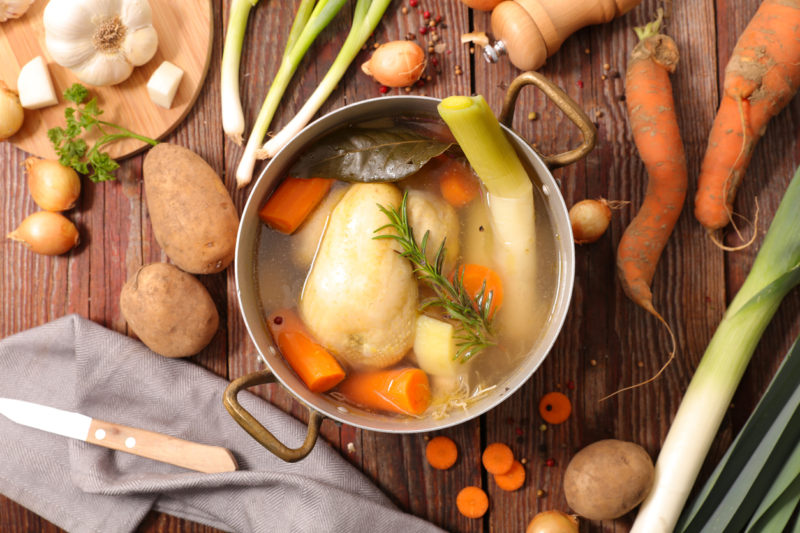
Image: iStock
Chicken is an incredibly popular animal protein – and the demand is growing globally. In 2000, there were 14.38 billion chickens across the globe. In 2019, that number rose to 25.9 billion and chicken sales reached $192.3 billion.
Chicken breasts are one of the most beloved cuts, accounting for 57% of chicken sales in 2020 in the United States. During the 2021 Super Bowl, Americans chowed down on an astounding 1.42 billion chicken wings. But when you purchase a 12-pack of chicken wings or a couple of chicken legs, what happens to the rest of the bird? Answer: it goes into other processed foods like nuggets and hot dogs.
We aren’t eating whole chickens anymore. In 1962, whole chickens accounted for 83% of sales. In 2014, only 11% of us were still buying whole birds.
Sure, roasting a whole chicken can take additional time and skill. But the benefits are many!
A whole chicken is more economical
Chicken breasts are the most popular cuts, but they’re also the most expensive! Chicken costs vary around the world, but the price per pound is typically cheaper for an entire chicken than a package of individual chicken parts. If you’re looking to save on your food costs, a whole chicken is the way to go.
A whole chicken is versatile and great for meal prep
There are so many ways to use a whole chicken (get the full scoop down below!). Roast a whole chicken to use throughout the week in your meals.
A whole chicken leads to less food waste and packaging waste
When you cook a whole chicken, you can not only use the meat but also save the bones for broth. And if you’re trying to cut down on packaging waste, skipping the styrofoam or plastic trays and opting for a whole bird helps.
A whole chicken can improve your culinary skills
Learning how to cook a whole chicken is a next-level culinary skill and one you’ll take great pride in once you learn how to do it. Roasting a chicken can build your kitchen confidence, and help you discover your inner recipe developer by adding your own seasoning blends and culinary creativity.
If you really want to challenge yourself, you can also explore cutting up a whole chicken yourself if you want to use certain parts right away and freeze the rest for later.
You’re using the whole bird, not just its component parts
A whole chicken can make people squeamish because yes, it looks like a chicken. When we break chickens down into their component parts, it can remove us from their origins and create a sense of complacency (especially if we don’t like to think about how that chicken came to be at the grocery store or on our plates).
Cultures around the world honour the entire animal by using all of it in their cooking. In North America especially, we tend to view certain parts of the chicken, like the breast, leg, thigh or wing, as desirable, while others are erroneously seen as ‘gross’ – such as the organ meats.
In fact, many of the chicken parts that are considered distasteful, like the liver and heart, are incredibly rich in nutrition. Many whole chickens come with the liver, heart, neck and giblets tucked inside that you can use.
*Tip: You can save the heart and liver for pate, or pulse them and add to recipes along with ground meat (burgers, meatballs, etc.). Necks and giblets are great for broth.
A whole bird helps us recognize and appreciate the entire bird, and be grateful for the nutrition it provides.
Culinary nutrition Benefits of Chicken
Chicken is rich in:
- Protein, which is an important macronutrient for muscle growth, healing and repair, immune health, energy levels, blood sugar balance, and enzyme and hormone production
- B vitamins for energy and stress support, particularly B3, B6 and B12
- Essential fats, including anti-inflammatory omega 3s
- Selenium, an antioxidant that also helps with the thyroid
- Heme iron for energy levels and red blood cell production
- Choline, which supports the brain and nervous system
Chicken is also grain-free and is in line with a number of popular diets including Paleo, AIP and keto.
Dark Meat Vs White Meat
For decades, nutrition experts recommended skinless white meat because it was considered ‘healthier’ than dark meat due to its lower fat content. This lines up, of course, with the general sentiment throughout most of the 20th century that fat is a ‘bad’ food. Now, we know that fat isn’t to be feared.
Dark meat is rich in the vitamins and minerals mentioned above, and recent research shows that dark meat doesn’t elevate cardiovascular disease risk. One study discovered that in women with high cholesterol, taurine – an amino acid in dark meat – is protective, and those with greater taurine levels were 60% less likely to develop or die of cardiovascular disease.
What Type of Chicken Should I Get?
At the Academy of Culinary Nutrition, we advocate for plant-rich diets and quality matters when choosing animal products. We opt for purchasing meat from farmers that take animal welfare, human health and environmental sustainability into account.
Whenever possible, we like chickens that are:
- grass fed
- organic
- free range
- pasture raised
- non-GMO
- raised with no added hormones or antibiotics
Evidence indicates that the way chickens are raised – particularly organic and grass-fed practices – can lead to chickens with a higher nutrient value and lower amounts of harmful, antibiotic resistant bacteria and is more beneficial to animal welfare.
Confused about meat labels? Check out this guide to what all those terms on animal products mean.
Best Cookware for Roasting a Whole Chicken
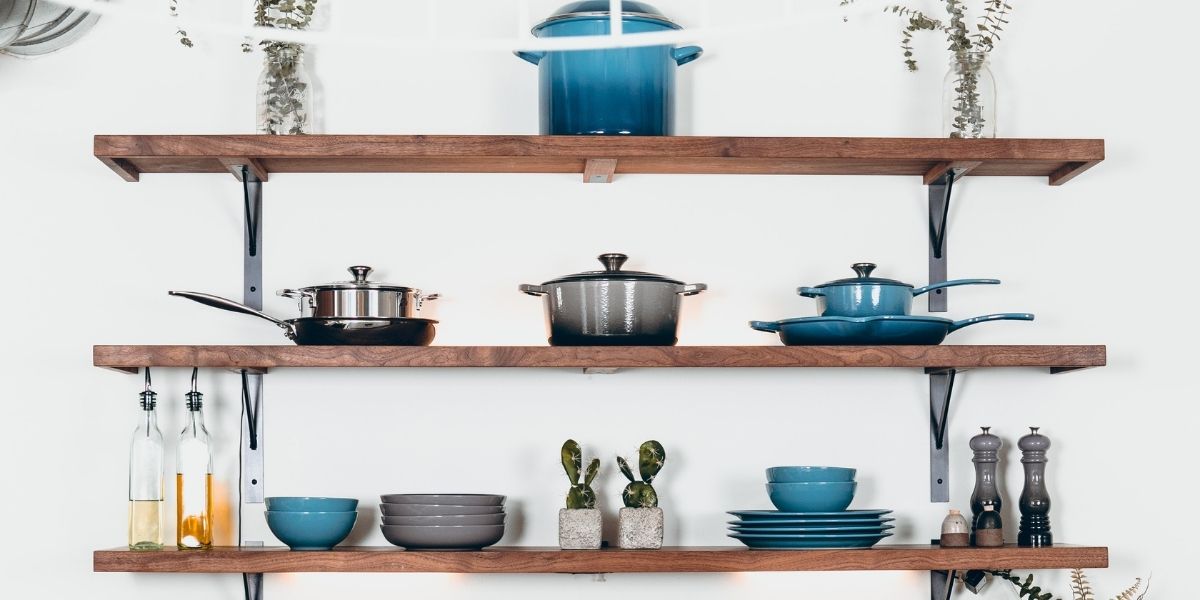
Safe, healthy cookware is important if you’d like to cook a whole chicken. There are a few different options you can use, including:
- a stainless steel roasting pan
- a sheet pan
- cast iron
- a glass baking dish
- an Instant Pot (then crisp it up in the oven)
No matter which type of cookware you choose, ensure that you use something large so your chicken can cook evenly (and gives you room to add some extra veggies).
Do you like the idea of whole food, from-scratch cooking, but think it’s impossible to achieve with a busy life? The Culinary Nutrition Expert Program can help you build your kitchen confidence and learn to make recipes that support your health, your family’s health or the health of your clients.
Seasoning Ideas
Chicken has a naturally neutral flavour, making it practically a blank canvas when it comes to seasoning. Any of your favourite seasoning blends, marinades, sauces, or fresh herbs, will work. The key to seasoning your whole chicken is adding your herbs and spices underneath the chicken skin.
Some of our faves to get you started:
- Garlic, rosemary, thyme and lemon
- Turmeric, ginger, cumin and coriander
- Salt and pepper
- Parsley, basil, oregano, lemon and salt
- Smoked paprika, cayenne, garlic powder, onion powder and salt
- Ginger, gluten-free tamari, sesame oil, lemon, sea salt
- Sage, marjoram, oregano and thyme
Another fantastic way to flavour chicken is to use a brine, which helps to keep it moist.
low Waste Tips: How to Use Up All That Chicken
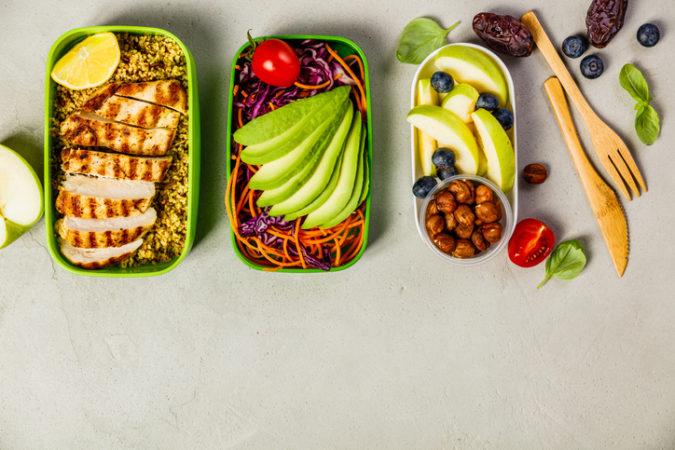
You’ve cooked a whole bird – now what? There are endless possibilities for what you can do with the meat.
When the chicken is out of the oven and has rested for a bit, you can certainly slice it and serve alongside your favourite side dish for a tasty family roast dinner. Otherwise, you can chop or shred the meat to add to:
- Soups
- Stews
- Chicken pot pie
- Salads
- Sandwiches
- Wraps
- Tacos or enchiladas
- Stir-fries
- Pasta
- Nachos
- Pizza
- Casseroles
- Lasagna
- Curries
- Fried rice
Once you’ve finished off the meat, pop your carcass into a large pot, slow cooker or Instant Pot and make chicken broth. Learn the ins and outs of making bone broth here.
how to cook a whole chicken
Our global team of Culinary Nutrition Experts is jam-packed with talent. We asked Amy Stoddart, a trained chef, to show us all how to cook a whole chicken simply. You won’t believe how easy it is to cook a no-fuss, tender chicken that everyone can enjoy.
Easy Roast Chicken
- Total Time: 0 hours
- Yield: 1 chicken 1x
Ingredients
1 whole chicken (about 5 pounds, can use larger or smaller – but be sure to adjust cooking time and gauge doneness by temperature)
Salt and pepper, to taste
1/2 – 1 tsp dried rosemary
1/2 – 1 tsp dried thyme
1 lemon, cut in half
1 Tbsp olive oil
Instructions
- Preheat oven to 375. Pat the chicken dry with kitchen towels or paper towels. Check the cavity of the chicken to see if a bag of giblets is tucked inside; if so, remove it.
- Gently separate the chicken skin from the bird, careful not to rip the skin, to prep for seasoning. For the legs and thighs, snip the skin a bit with kitchen scissors to make it easier to get your fingers underneath.
- Season underneath the skin with salt, pepper, rosemary and thyme.
- Stuff the lemon into the cavity of the chicken. This helps to keep the bird moist. You could add fresh herbs in here at this point, if desired.
- Tuck wings under the bird to keep them secure.
- Drizzle the olive oil on the chicken and rub it in.
- Cooking Option 1: Place the bird on a wire rack over a baking sheet to allow for air circulation. Bake for 45 minutes to an hour, until the internal temperature of the bird reaches 165F.
- Option 2: Place the bird on a bed of prepped root vegetables (halved onion, big chunks of carrots, sweet potato, potato, parsnips, etc.). Bake for 45 minutes to an hour, until the internal temperature of the bird reaches 165F.
- Let the meat rest to allow juices to redistribute and stay within the meat.
- Carve and serve.
- Prep Time: 10
- Cook Time: 45 -60 minutes
Keywords: chicken, roast chicken, how to cook a chicken, gluten-free, dairy-free, paleo, cooking chicken
You can do this. Give cooking a whole chicken a try!
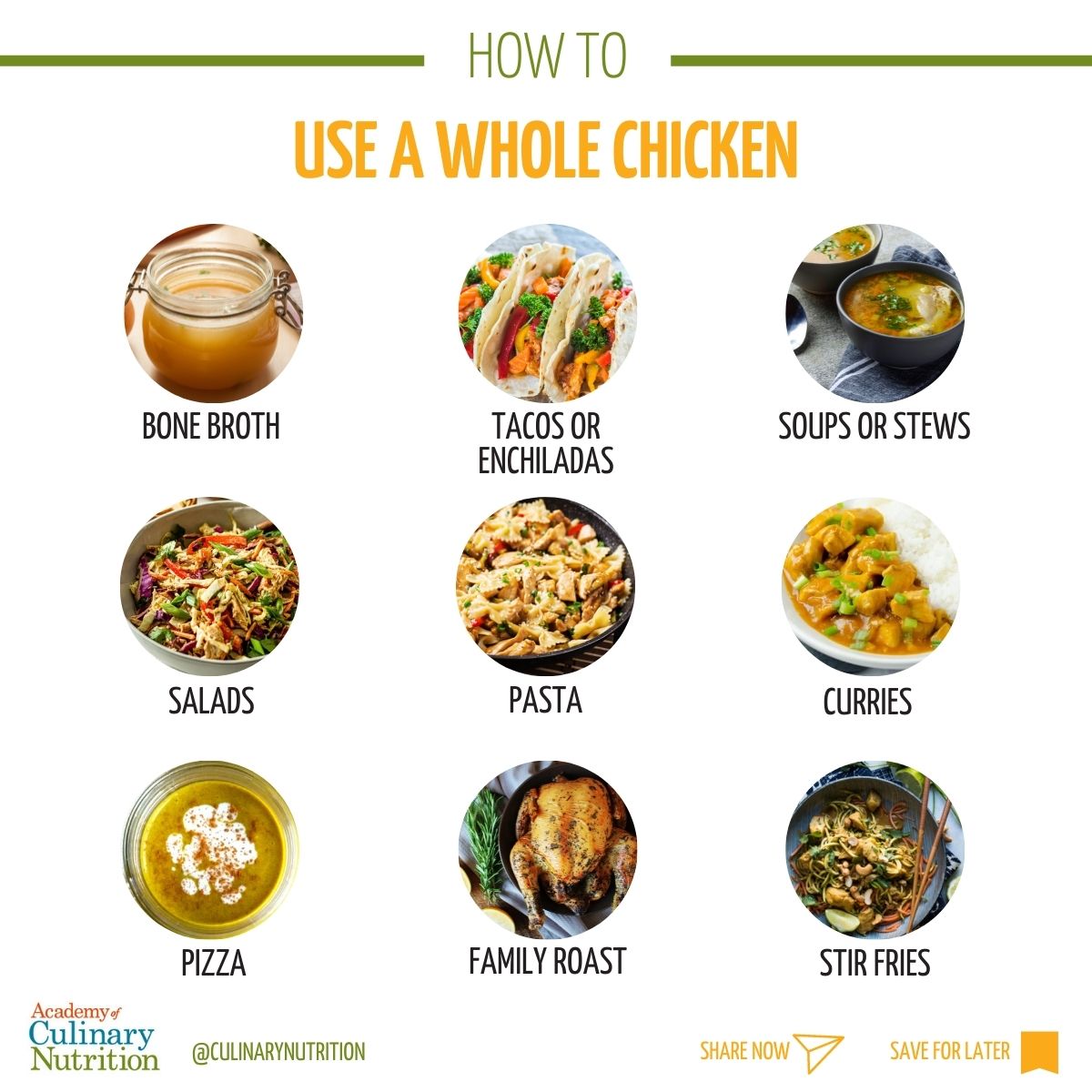
Free Resource Library
Enjoy more than 40 downloadable guides, recipes, and resources.

















